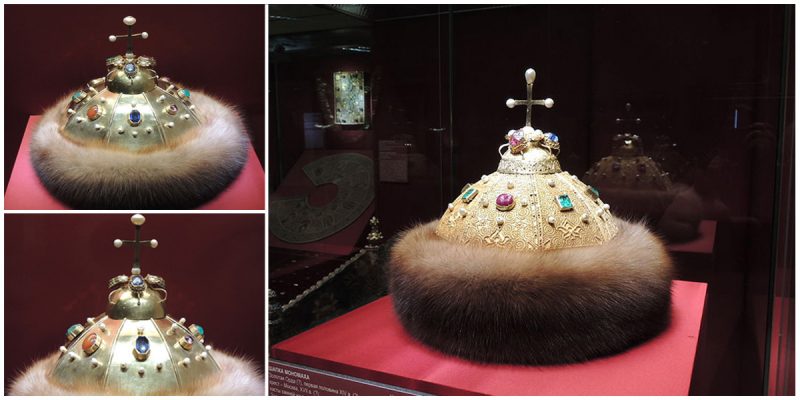Monomakh’s Cap, also called the Golden Cap, is a crown that was worn by the Russian Kings and one of the symbols of Russian autocracy.
This chief relic of the Russian Grand Princes and Tsars is also a cultural example of the relationship between the Kazans and Russia. It was made around the late 13th or 14th century, and it is the oldest of the Russian crowns kept in the Kremlin, Moscow.
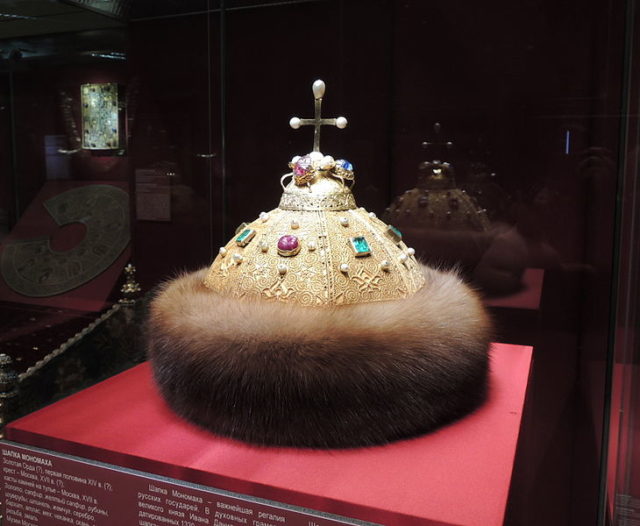
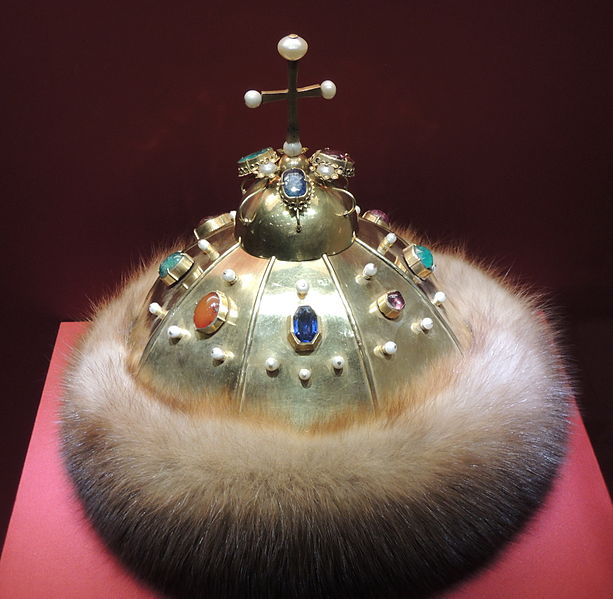
The cap itself is a gold onion-shaped skullcap and consists of eight golden plaques, elaborately ornamented with a scrolled gold overlay, adorned with filigree, small pearls and embellished with precious stones.
It is topped by a simple gold cross with pearls at each end (added centuries after it was originally made, along with the jewels on the sides, and the characteristic broad fur border).
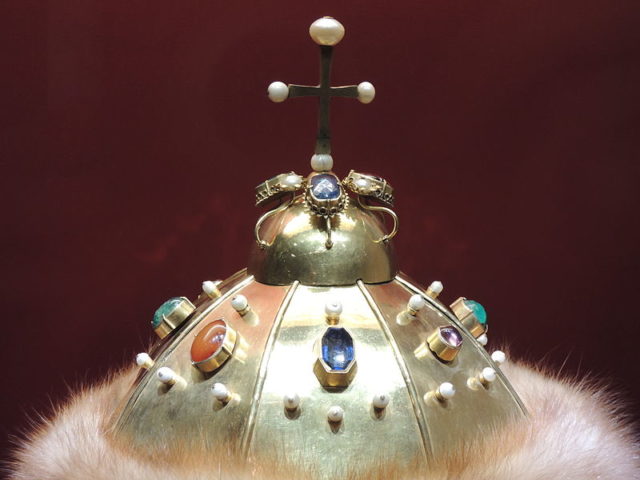
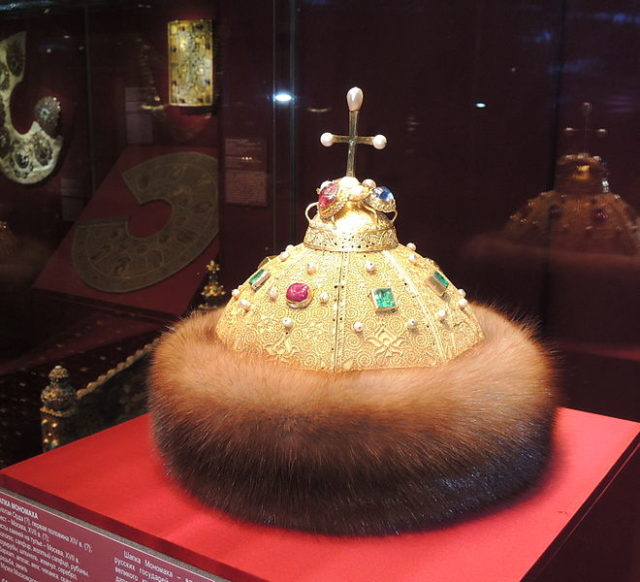
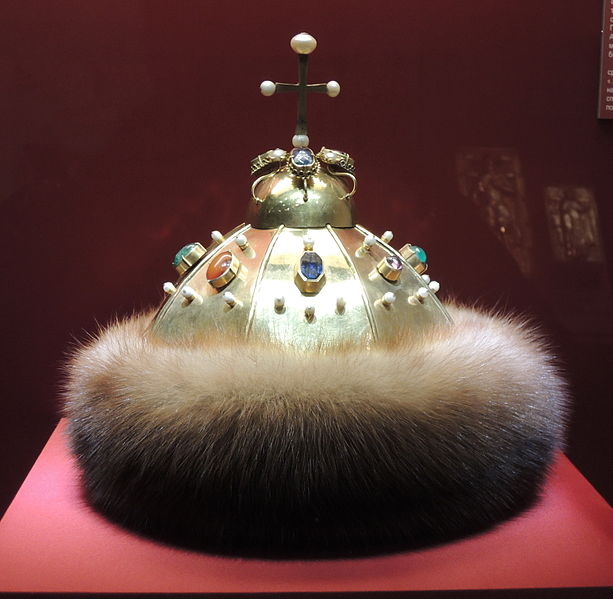
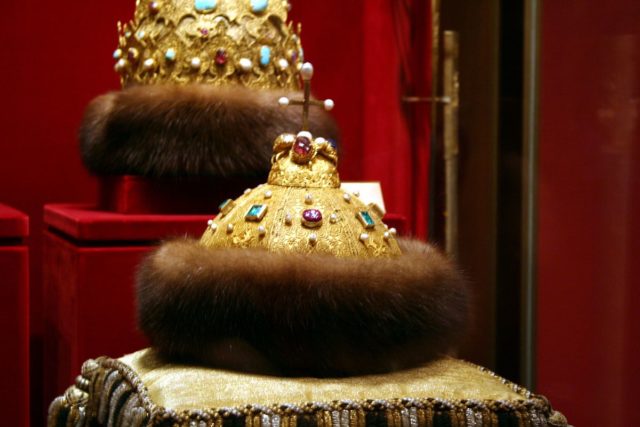
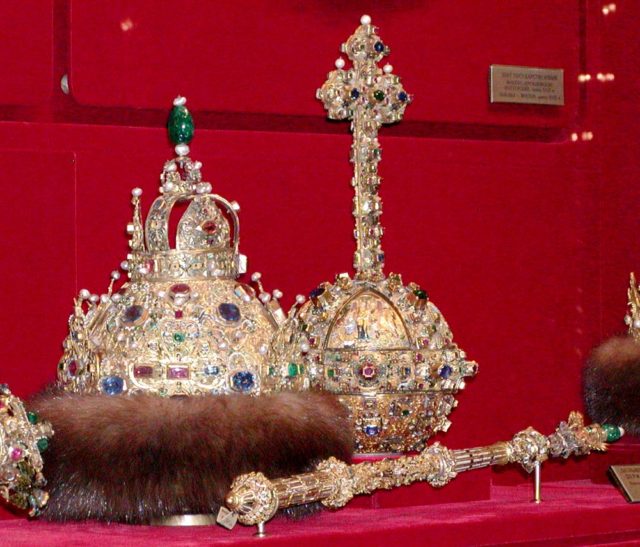
In the 15th-century, there was a legend that the crown was a gift from the Byzantine emperor, Constantine Monomachus to his grandson Vladimir Vsevolodovich Monomakh, the grand prince of Kiev. Accordingly, the crown became known as “Monomakh’s Cap.” The legend was elaborated in The Tale of the Princes of Vladimir and served as a basis for the political theory of “Moscow as the Third Rome.“
Until today, experts have no common idea about from where it had been executed. According to some, the shape of the crown and the motifs of the filigree ornament give evidence of an Oriental origin.
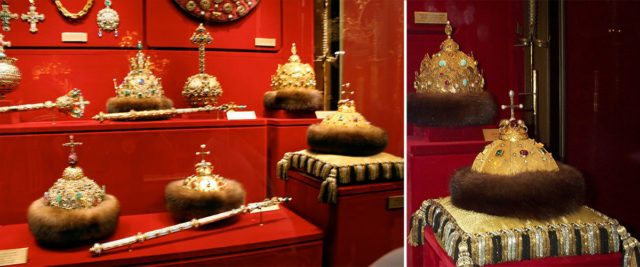
The cap of Monomakh was first used in a coronation on 16th January 1547, when Ivan IV (Ivan the Terrible) crowned himself as the first Tsar of Russia at age sixteen. He was the first to be crowned as “Tsar of All the Russias.”
Since 1547, the Crown of Monomakh was used in the crowning of all the Russian rulers until 1721, when Peter the Great designed a new Imperial Crown which replaced the cap of Monomakh in the coronation ceremony. Other crowns were also worn, such as the Kazan Cap, but for other occasions.
